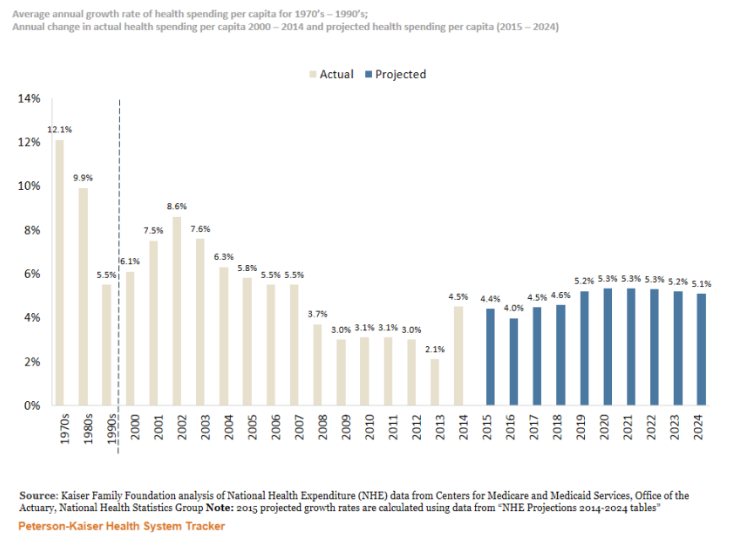Democratic Party’s Predictions for the Affordable Care Act
Former US Senator Tom Daschle spoke about his predictions for the future of the Patient Protection and Affordable Care Act at the Democratic National Convention.

- The future of the healthcare industry and the health insurance space is very much dependent on the upcoming presidential elections and the two parties' stances on the Patient Protection and Affordable Care Act.

The Affordable Care Act has brought the uninsured rate in the United States down to only 10 percent, which is the lowest in the nation’s history. Additionally, as many as 20 million more Americans now have access to healthcare coverage thanks to the ACA.
Nonetheless, the ACA has had some disadvantages for the health insurance market. Since payers have had difficulty operating on the exchanges, many consumers have been left facing higher monthly premiums from year to year. Since the risk pools have changed drastically for payers since the ACA was established, many payers have created narrow provider networks and imposed higher deductibles along with other cost-sharing rates.
Due to some of the disadvantages brought by the Affordable Care Act, the Republican Party has proposed a replacement plan in their efforts to repeal this landmark healthcare law. House Speaker Paul Ryan released the GOP replacement plan in June 2016, which toutes the need for health savings accounts, selling health plans across state borders, and putting an end to Medicaid expansion.
Despite some of the opposition to the healthcare law, the growth rate of healthcare spending has been slowed down due to the Affordable Care Act while the Medicare program has been revitalized toward a longer lifespan. The Peterson-Kaiser Health System Tracker shows that healthcare spending growth will average at about 5 percent annually over the next several years, which is much lower than the double-digit growth seen in prior decades.
The Social Security Administration outlined how the Medicare program’s funding will last until at least 2028, which is longer than estimates prior to the implementation of the Affordable Care Act. Along with these benefits, the Affordable Care Act has prevented health insurance companies from denying coverage to people with pre-existing conditions. This is one of the main reasons that the risk pools have changed for payers.
Today, former US Senator Tom Daschle and other healthcare experts partnering with the Americans United for Change organization spoke at the Democratic Convention about some key pathways toward strengthening the healthcare industry in the United States.
“We succeeded in passing the ACA when President Obama came into the White House,” Brad Woodhouse, President of the progressive advocacy group Americans United for Change, said at the panel. “We were fighting the Koch brothers who were urging young people to not sign up for the ObamaCare exchanges. Soon we’re going to elect the first woman president and we’re going to cement healthcare reform and take over the Senate!”
Woodhouse showed optimism about the future of healthcare reform and the opportunities that the Democratic party could bring to consumers around the country.
“Yesterday at the convention, all throughout the day, we heard about healthcare. Before the panel gets started, I want you to think about - addiction,” Michael Cartwright, national expert on addiction, said. “Drug and alcohol addiction accounts for one-half of all emergency room visits. In fact, 32 percent of our hospital stays can be attributed back to alcohol and drug addiction. Currently 95 percent of spending surrounding drug addiction is centered around incarceration.”
Cartwright added that it’s vital for the country to put more funds into the prevention and treatment of drug and alcohol addiction.
“Let’s do what we did for tobacco and educate our young about alcohol and drugs. Let’s put research dollars into finding out about the brain disease of addiction. Please don’t forget that addiction is a major piece of healthcare,” Cartwright concluded.
“I think this has been a remarkable transformational moment in the country [due to the ACA],” former Senator Tom Daschle posed. “The opportunity people have to enter the health insurance market is strong. The opportunity for young people to get insured under their parents is impressive. Today, we have 21 million Americans who are insured due to the Affordable Care Act.”
Daschle mentioned the many positives of the Affordable Care Act and went on to explain where we still need to reform, which includes positioning the healthcare industry to adopt bundled payments and alternative payment models as payers and providers transition for fee-for-service reimbursement structures.
“Healthcare has lower costs than at any other time in history,” Daschle misspoke. “There’s a lot to be proud of but there’s a lot left to do. There’s a lot of work left to be done organizationally around payment reform and healthcare delivery. We’ve got to bring healthier people into the market and work on risk-sharing. We are looking to continue to build, to make the market stronger, and to encourage healthier people to enter the health insurance market.”
Daschle hopes that the future will bring all 50 states to expand their Medicaid programs and take the funding offered from the federal government in order to close the coverage gap and ensure more Americans have access to health insurance.
“We will move away from fee-for-service,” Daschle continued. “We will see bundled payments and other payment forms in our healthcare system. We will strive to keep people healthy and find better ways to deal with end-of-life decisions in the future.”
Essentially, the Democratic Party is hopeful for the future of healthcare reform and has many items on its agenda to improve reimbursement between payers and providers.
Dig Deeper:
President Obama Highlights Progress from Affordable Care Act
What Repealing the Affordable Care Act Would Mean for America

